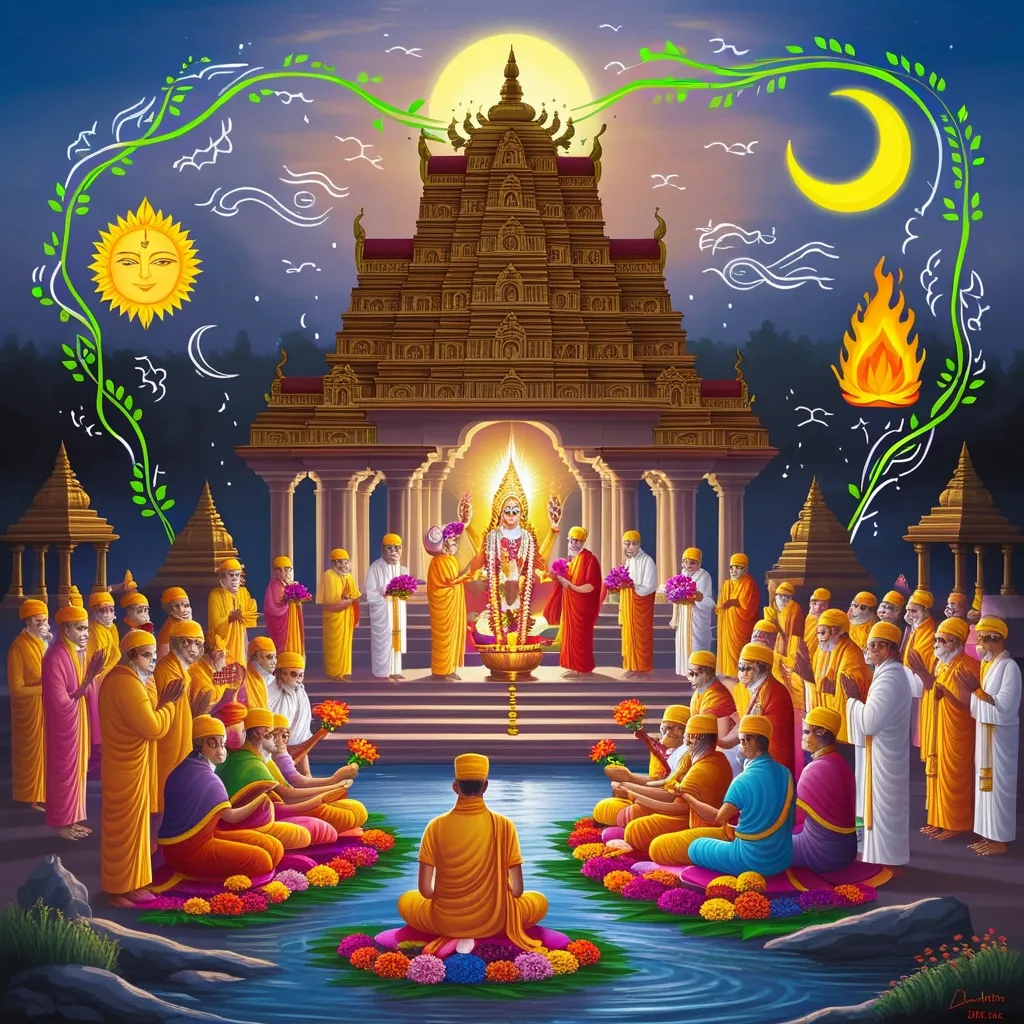In the buzzing world of Hindu rituals, there’s one mantra that truly stands out for its depth and wide appeal: the Mantra Pushpam. This age-old Vedic hymn is a crucial part of Hindu worship, especially when flowers are offered to deities during the closing moments of puja rituals. Let’s take a stroll through the essence and meaning of this sacred chant.
Mantra Pushpam traces its roots back to the Taittiriya Aranyakam, a section of the Krishna Yajurveda, which is one of the four key Vedas. The Yajurveda is famed for its detailed guides on how to perform rituals and sacrifices, making it central to Hindu religious practices. This mantra is recited in temples and devout Hindu homes, often daily or on special occasions, wrapping up worship ceremonies with a significant spiritual touch.
In Hindu puja rituals, offering flowers to deities symbolizes devotion and respect. The flowers represent life’s beauty and fragrance, and by offering them, devotees aim to connect with the divine. It’s during this floral offering that the Mantra Pushpam is chanted, adding an extra layer of spiritual depth. The priests or pujaris sing this mantra in unison, creating a harmonious and reverent vibe that resonates with everyone present.
But the Mantra Pushpam is more than just a chant—it’s a philosophical reflection on the universe’s interconnectedness. It talks about the fundamental elements of nature—water, fire, air, the sun, the moon, and the earth—and how they depend on each other. One of the passages goes like this:
“He who knows the flower of the waters, He becomes endowed with the flower, people, and animals. Moon is the flower of the waters. He who knows this becomes endowed with the flower, progeny, and animals. He who knows the support of the waters becomes endowed with the support.”
Reading this might seem cryptic, but it holds deep spiritual meaning. The “flower of the waters” symbolizes life’s essence and the source of all creation. The moon, often linked to the mind’s flow, supports all waters, highlighting consciousness’ role in sustaining life.
The mantra also dives deeper into the cosmic relationships between the elements. It states that fire is the source of water, and water is the source of fire. Likewise, air is the source of water, and water is the source of air. This cyclical relationship underscores that each element is both the source and product of another, reflecting the inherent harmony and balance in nature.
“He who knows the source of water, Becomes established in himself, Fire is the source of water, He who knows this, becomes established in himself. Water is the source of fire, He who knows this, becomes established in himself.”
This interdependence isn’t just a physical phenomenon; it’s also spiritual. The mantra suggests that understanding these relationships leads to a deeper understanding of oneself and one’s place in the universe.
Often dubbed as the “flower of Vedic chants,” the Mantra Pushpam captures the essence of Vedic wisdom. It’s more than a ritualistic chant; it’s a guide to spiritual enlightenment. The mantra stresses knowing the source and interconnectedness of all elements, a metaphor for grasping the ultimate reality.
The spiritual heart, home to absolute consciousness, is the “flower” in the mantra. This flower never fades, representing the soul’s eternal and unchanging nature. By chanting the Mantra Pushpam, devotees aim to connect with this eternal consciousness, seeking inner peace and spiritual joy.
The teachings of Mantra Pushpam go beyond rituals, offering practical insights for daily life. The mantra encourages a holistic view of the world, reminding us that every element is interconnected and interdependent. This perspective can drive a sense of respect and harmony with nature, promoting a balanced and sustainable lifestyle.
Moreover, the mantra’s focus on understanding the source and interconnectedness of elements applies to personal relationships and community building too. Recognizing that each person is part of a larger web of relationships can nurture greater empathy, cooperation, and social harmony.
Mantra Pushpam is a powerful and evocative chant that goes beyond its ritualistic roots to offer deep spiritual insights. It reminds us of all elements’ interconnectedness and the importance of understanding creation’s source. By chanting this mantra, devotees not only complete their puja rituals with reverence but also strive to align with the universe’s deeper truths. In today’s world, where harmony and balance are much-needed, the teachings of Mantra Pushpam provide timeless wisdom to guide us toward a more enlightened and compassionate life.
So, while Mantra Pushpam remains a cherished part of ancient Hindu rituals, its message has universal appeal. Its teachings about interconnectedness and eternal consciousness resonate with anyone seeking a deeper understanding of life. The next time you hear or chant the Mantra Pushpam, take a moment to reflect on its deeper meanings and let its wisdom guide you towards a life of balance, respect, and inner peace.






